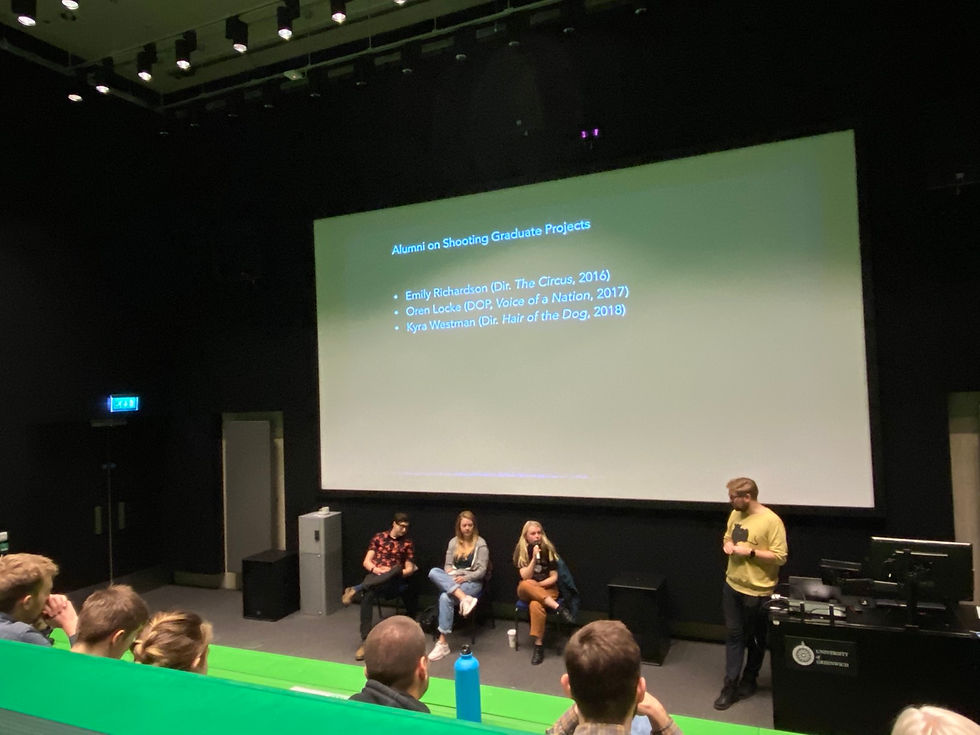Year 2
- Emma Granger
- Feb 14, 2020
- 3 min read
In second year the most relevant thing I learnt for my career is how to deal with a crew that loses interest in a project in the making. Self motivation and dedication are crucial factors in the making of a film. As a project begins its production process, crew members are driven by the excitement of giving birth to something new, but as time goes by, stress accumulates and things don’t go as planned people lose interest and therefore put less effort into the cause. Student projects that have a budget that barely covers the costs of transportation for the actors, food and locations can only be brought to completion if everyone who is on board actually has some type of passion that drives the whole process; when crew members fail to keep the moral high they lose interest, especially when expectations aren’t met and inconveniences and issues keep popping up. As the editor and production designer for the short N2O2: New Oxygen I encountered major issues in terms of continuity since people kept moving props around due to bad organisation, not enough time to prepare the set and the absence of a proper shot list. Those issues showed up the most during the post-production process: I had to work double, masking out objects and being particularly careful with choosing the shots so the background wouldn’t differ so much from the previously used takes.

Me holding a camera and checking the shots on set of N2O2: New Oxygen (2018)
Another project I had the honour to work on is Room Service (2019), directed by Aldridge-Flores J., in which - on 3 different screens - 3 hotel rooms would be showcased at the same time from the point of view of an external observer. In this film, again, I was back in my editing role full of motivation and drive because I found that we were going to produce an exposition piece; the whole process of pre-production was insanely difficult and draining, we had to make so many changes to the script and constantly update the shooting logistics even on set while filming, which is something I do not advise anyone to do. As a production team we didn’t entirely think the whole shoot through - as in our heads it had to be filmed from a tripod with various takes, re-arranging the set, then repeat it all over again. Luckily, I had a weird feeling about it, it all seemed too easy, therefore I checked the footage during lunch break and I realised that, in order for the piece to be believable and realistic it had to be shot in one take per room. I was able to make myself clear enough to convince my crew to re-shoot everything in order to create a better piece of work. Together with the director we quickly worked out a plan and choreography to have a few small cutaways - to leave us and the actors a way of taking a few breaks - that ended up making a considerable difference in the final product. In post-production I ended up putting together the 3 rooms - adding one other to make the piece more even - as a CCTV surveillance screen, therefore creating a different film from what was originally planned, but still effective as an expository installation, as it can be seen in my showreel.
Bibliography
Aldridge-Flores J., N2O2: New Oxygen, Isabel Christian, 2018
Aldridge-Flores J., Room Service, Svajune Sodeikyte, 2019
Granger E., Critical Evaluation: Room Service, unpublished paper, University of Greenwich, 2019



Comments